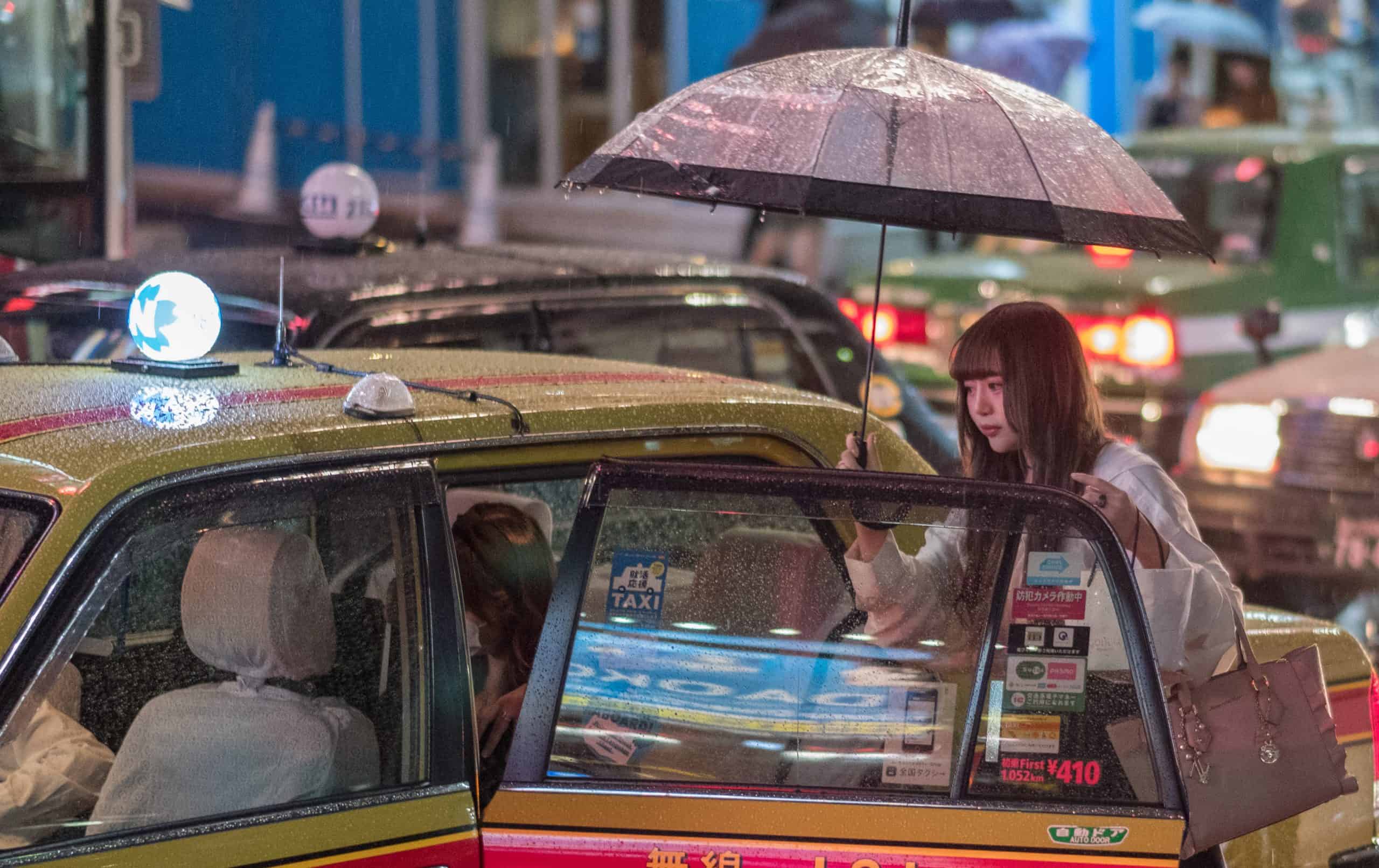Do you need to take a taxi in Japan? Less often than you’d think. In Tokyo, for example, the subways are superb: clean, fast, affordable and impeccably on time. But should you take a cab ride while you’re in Japan? Most definitely. A taxi ride is a great way to understand and appreciate the general cultural obsession with setting a higher bar of service and quality.
Here are the glorious quirks (along with the practical good-to-know details) to prepare you for a ride in a Japanese taxi.
When to take one
Japanese cab drivers are professional and honest, but knowing when and where you’re going determines the cost. Visitors and locals alike typically opt for taxis under two scenarios: The first is late at night in Tokyo, when the trains and buses have limited or suspended service until morning; and the second is when you’re in a rural area or even other cities, such as Kyoto, where the public-transportation options aren’t as extensive as you find in Tokyo. When in either of those two situations or places, definitely take a cab.
Can you use Uber? Sure, but ride-share services haven’t caught on extensively in Japan. That’s because Japanese taxis are too good of a thing — there’s nothing to disrupt about them. The classic taxi experience is far superior than you’ll find in other countries.
How to take one
To hail a cab, just follow the same rituals observed most everywhere in the West. Your hotel can call one, use an app such as JapanTaxi, go to a cab stand outside a metro station, or simply wave one down. Just do this in a spot where the taxi has enough room to stop and let you in. Cabs stand out with their green license plates, and a red light on the dash means the taxi is available (green means it’s occupied).
This is where the similarities with Western taxis end — for the better …
The fascinating (and beautiful) differences
After the car stops, wait for the driver to open the door automatically with a lever he controls from the front seat. He’ll also close it behind you and reopen it at your final stop.

You’ll notice that the drivers wear white gloves. That, along with the fact that they typically wear a dark suit and tie, is as sure a sign as any that taxi drivers take their job seriously and offer a safe, speedy and pleasant service. You’ll also notice that cabs are impeccably clean, complete with white, lacy seat covers. Despite all this extra effort, however, drivers don’t expect tips. What they do expect, though, is that you offer the same convenience and speed they provide you.
How to communicate and pay
Since drivers tend to speak limited if any English, be sure to have the address of your destination written down on a business card — or show the driver a map on your phone. Also, if your ride is a short distance and you’re paying with cash, don’t fork over a big bill and ask the driver to break it. Most taxis accept credit cards, but it’s a good idea to carry some small notes with you just in case.
On all rides, the meter starts with a base fare of about 400 yen, followed by about 330 yen ($3) per kilometer. The only thing to be mindful of is that after 10 p.m., there’s typically a 20% surcharge applied to your final fare.
You can skip the nighttime surcharge by using Uber — but then you’d miss out on a most quintessential Japanese experience.

